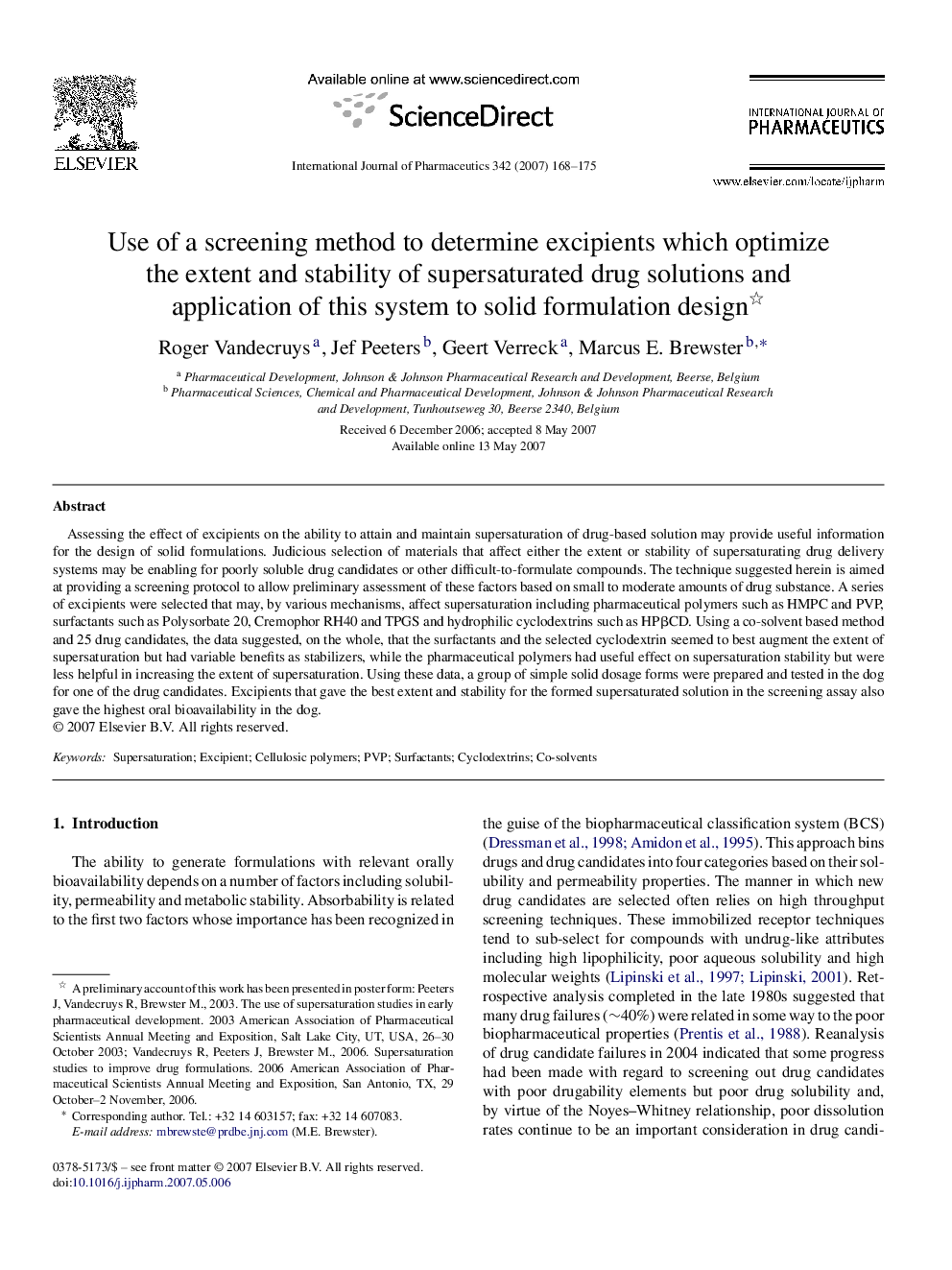| Article ID | Journal | Published Year | Pages | File Type |
|---|---|---|---|---|
| 2505955 | International Journal of Pharmaceutics | 2007 | 8 Pages |
Assessing the effect of excipients on the ability to attain and maintain supersaturation of drug-based solution may provide useful information for the design of solid formulations. Judicious selection of materials that affect either the extent or stability of supersaturating drug delivery systems may be enabling for poorly soluble drug candidates or other difficult-to-formulate compounds. The technique suggested herein is aimed at providing a screening protocol to allow preliminary assessment of these factors based on small to moderate amounts of drug substance. A series of excipients were selected that may, by various mechanisms, affect supersaturation including pharmaceutical polymers such as HMPC and PVP, surfactants such as Polysorbate 20, Cremophor RH40 and TPGS and hydrophilic cyclodextrins such as HPβCD. Using a co-solvent based method and 25 drug candidates, the data suggested, on the whole, that the surfactants and the selected cyclodextrin seemed to best augment the extent of supersaturation but had variable benefits as stabilizers, while the pharmaceutical polymers had useful effect on supersaturation stability but were less helpful in increasing the extent of supersaturation. Using these data, a group of simple solid dosage forms were prepared and tested in the dog for one of the drug candidates. Excipients that gave the best extent and stability for the formed supersaturated solution in the screening assay also gave the highest oral bioavailability in the dog.
